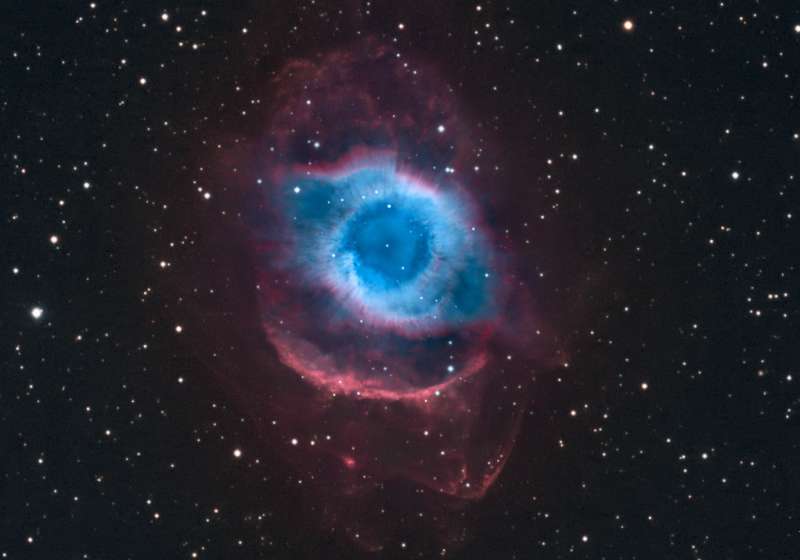Credit & Copyright: Martin Pugh
Explanation:
A mere seven hundred light years from Earth, in the constellation
Aquarius,
a sun-like star is dying.
Its last few thousand years have produced the
Helix
Nebula (NGC 7293), a well studied and nearby example of a
Planetary
Nebula,
typical of this final phase of stellar evolution.
A total of 58 hours of exposure time have gone in to creating this
deep view of the nebula.
Accumulating narrow band data from emission lines of hydrogen atoms in
red and and oxygen atoms in blue-green hues,
it shows remarkable details of the
Helix's brighter inner region, about 3
light-years across, but also follows fainter
outer halo
features that give the nebula a span of well over six light-years.
The white dot at the Helix's center is this Planetary Nebula's hot,
central star.
A simple looking nebula at first glance,
the Helix is now understood to have a surprisingly
complex geometry.
1999 2000 2001 2002 2003 2004 2005 2006 2007 2008 2009 2010 2011 2012 2013 2014 2015 2016 2017 2018 2019 2020 2021 2022 2023 2024 2025 |
Январь Февраль Март Апрель Май Июнь Июль Август Сентябрь Октябрь Ноябрь Декабрь |
NASA Web Site Statements, Warnings, and Disclaimers
NASA Official: Jay Norris. Specific rights apply.
A service of: LHEA at NASA / GSFC
& Michigan Tech. U.
|
Публикации с ключевыми словами:
planetary nebula - Helix Nebula - NGC 7293 - Туманность Улитка
Публикации со словами: planetary nebula - Helix Nebula - NGC 7293 - Туманность Улитка | |
См. также:
Все публикации на ту же тему >> | |
